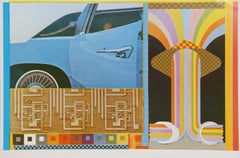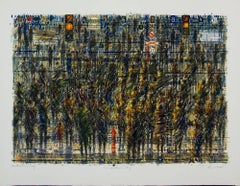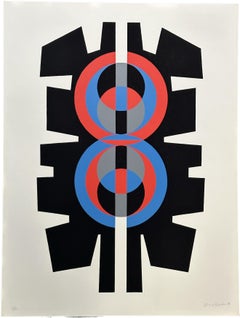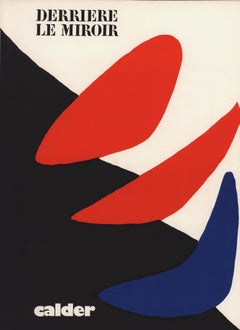Late 20th Century Abstract Prints
Pop Art Late 20th Century Abstract Prints
Lithograph, Offset
Late 20th Century Abstract Prints
Lithograph, Screen
Pop Art Late 20th Century Abstract Prints
Lithograph
Expressionist Late 20th Century Abstract Prints
Screen
Abstract Late 20th Century Abstract Prints
Screen
Modern Late 20th Century Abstract Prints
Lithograph
Abstract Late 20th Century Abstract Prints
Screen
Contemporary Late 20th Century Abstract Prints
Lithograph
Abstract Late 20th Century Abstract Prints
Mixed Media
Surrealist Late 20th Century Abstract Prints
Lithograph
Pop Art Late 20th Century Abstract Prints
Screen
Abstract Geometric Late 20th Century Abstract Prints
Screen
Surrealist Late 20th Century Abstract Prints
Mixed Media, Pencil, Lithograph, Screen
Abstract Late 20th Century Abstract Prints
Lithograph
Minimalist Late 20th Century Abstract Prints
Lithograph
Abstract Geometric Late 20th Century Abstract Prints
Screen
Abstract Late 20th Century Abstract Prints
Screen
Abstract Geometric Late 20th Century Abstract Prints
Screen
Abstract Expressionist Late 20th Century Abstract Prints
Porcelain, Mixed Media, Screen
Op Art Late 20th Century Abstract Prints
Screen
Abstract Late 20th Century Abstract Prints
Mixed Media, Handmade Paper, Linocut
Abstract Late 20th Century Abstract Prints
Screen
Pop Art Late 20th Century Abstract Prints
Lithograph, Offset
Modern Late 20th Century Abstract Prints
Color, Screen
Op Art Late 20th Century Abstract Prints
Screen
Pop Art Late 20th Century Abstract Prints
Screen
Surrealist Late 20th Century Abstract Prints
Etching
Abstract Geometric Late 20th Century Abstract Prints
Screen
Abstract Late 20th Century Abstract Prints
Lithograph
Abstract Late 20th Century Abstract Prints
Lithograph
Abstract Late 20th Century Abstract Prints
Etching
Abstract Geometric Late 20th Century Abstract Prints
Screen
Abstract Expressionist Late 20th Century Abstract Prints
Lithograph
Abstract Late 20th Century Abstract Prints
Lithograph
Abstract Late 20th Century Abstract Prints
Lithograph
Abstract Late 20th Century Abstract Prints
Lithograph
Abstract Late 20th Century Abstract Prints
Lithograph
Surrealist Late 20th Century Abstract Prints
Engraving
Surrealist Late 20th Century Abstract Prints
Screen
Abstract Geometric Late 20th Century Abstract Prints
Screen
Abstract Late 20th Century Abstract Prints
Etching, Aquatint
Pop Art Late 20th Century Abstract Prints
Offset
Abstract Late 20th Century Abstract Prints
Screen
Abstract Late 20th Century Abstract Prints
Lithograph, Canvas, Ink
Kinetic Late 20th Century Abstract Prints
Lithograph
Pop Art Late 20th Century Abstract Prints
Postcard
Abstract Late 20th Century Abstract Prints
Etching
Abstract Geometric Late 20th Century Abstract Prints
Screen
Abstract Geometric Late 20th Century Abstract Prints
Screen
Contemporary Late 20th Century Abstract Prints
Black and White, Color, Lithograph
Abstract Geometric Late 20th Century Abstract Prints
Screen
Abstract Expressionist Late 20th Century Abstract Prints
Aquatint
Conceptual Late 20th Century Abstract Prints
Paint, Lithograph
Pop Art Late 20th Century Abstract Prints
Screen
Pop Art Late 20th Century Abstract Prints
Screen
Op Art Late 20th Century Abstract Prints
Lithograph
Abstract Late 20th Century Abstract Prints
Lithograph
Modern Late 20th Century Abstract Prints
Lithograph
Surrealist Late 20th Century Abstract Prints
Etching
Abstract Late 20th Century Abstract Prints
Screen
Read More
Joan Mitchell’s Rare, Late-Career Diptych Buzzes with Life
Beneath the inky blackness, the painter’s irrepressible energy electrifies this pair of intaglio prints.
The 1stDibs Guide to Types of Abstract Art
Get to know the key movements and artists who have influenced visual culture for more than a century.
Get to Know the Artists Who Led the Op Art Movement
In the 1960s and '70s, the hypnotic creations of Op artists went mainstream and influenced the look of pop culture.





